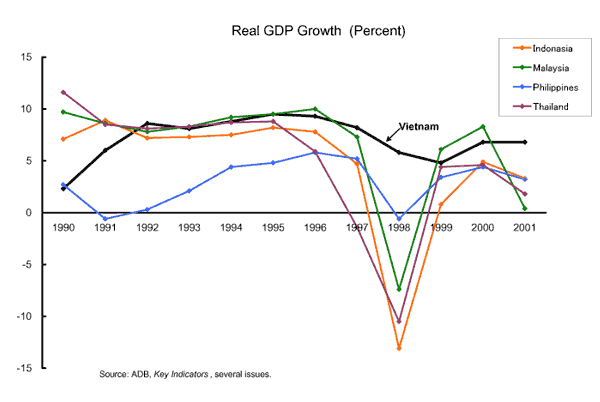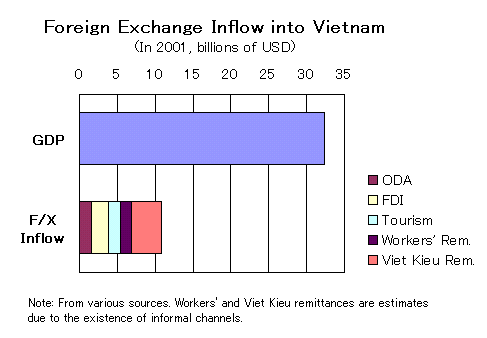

[ Back to Main page (English)]
[Back to Main page (Japanese)]
A Prosperity without Competitiveness?
In recent years, Vietnam's economic growth is higher and more stable than ASEAN4 (Malaysia, Thailand, Philippines and Indonesia). Vietnam appears to be steadily catching up with the more advanced countries in ASEAN. At the time of the Asian financial crisis (1997-98), Vietnam's growth slowed down only moderately while the neighboring countries experienced a severe collapse in output. At present, domestic demand is robust as manifested in construction and consumption booms.
Where does the strength of Vietnam's macroeconomy come from? It is not because Vietnam is already competitive in the global economy. The main reason can be found in the large inflow of foreign exchange relative to economic size. Apart from regular export earnings, the following inflows summing up to USD 10.8 billion (33 percent of GDP) can be identified for 2001 (statistics differ from source to source; and some come through informal channels):
| ODA disbursement | USD 1.5 billion |
| FDI implementation | USD 2.3 billion |
| Tourism receipt | USD 1.5 billion |
| Workers' remittances | USD 1.5 billion |
| Viet Kieu remittances | USD 4.0 billion |
While the precise number can be debated, the rough order of magnitude is hard to deny. It is no wonder that a country receiving such a huge infusion of foreign exchange can build new houses and buy more motorbikes. Can Vietnam sustain this situation? Surely not, if Vietnam fails to improve competitiveness quickly and drastically as trade liberalization proceeds. Most of the current inflow assumes a bright future of the Vietnamese economy. If that optimism is dashed, the inflow will certainly diminish.